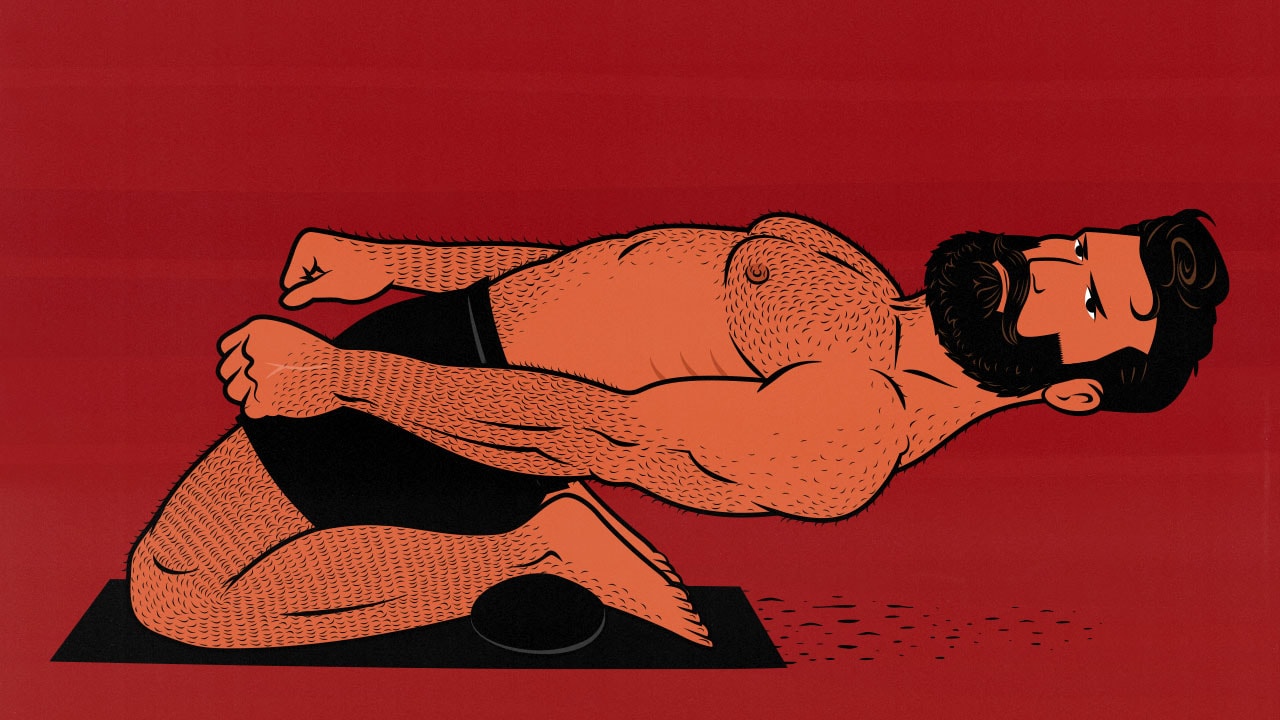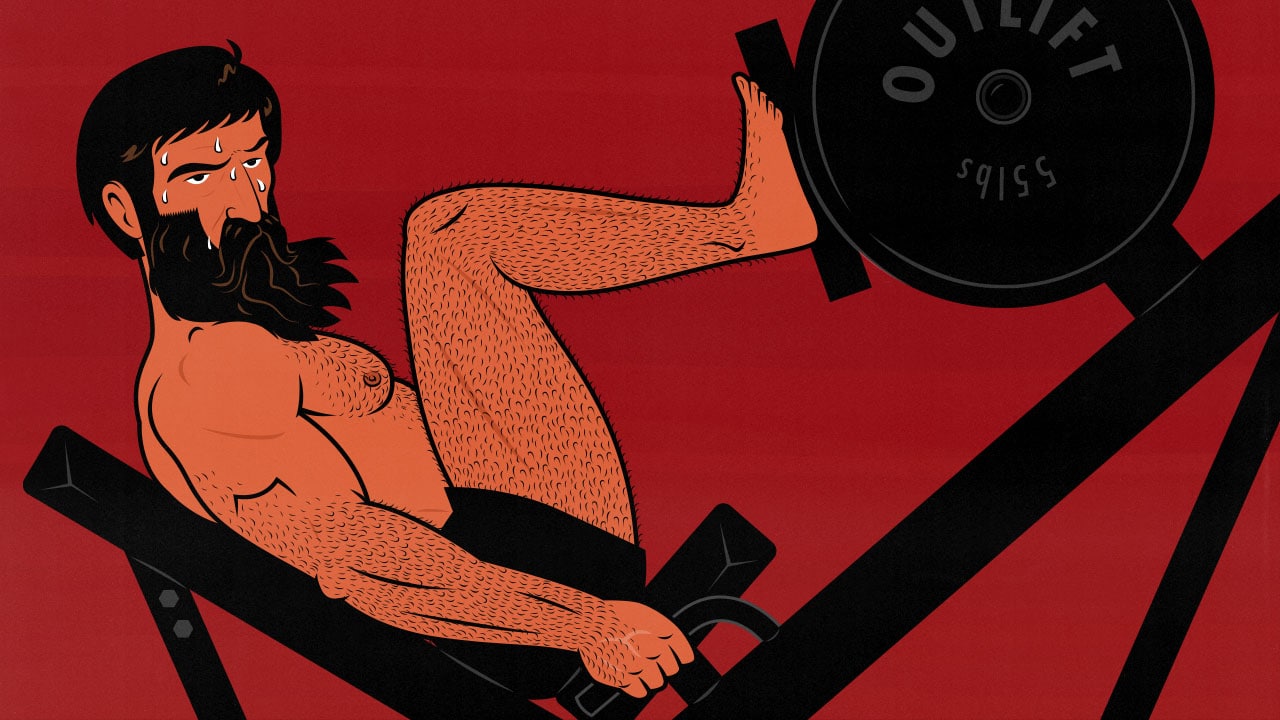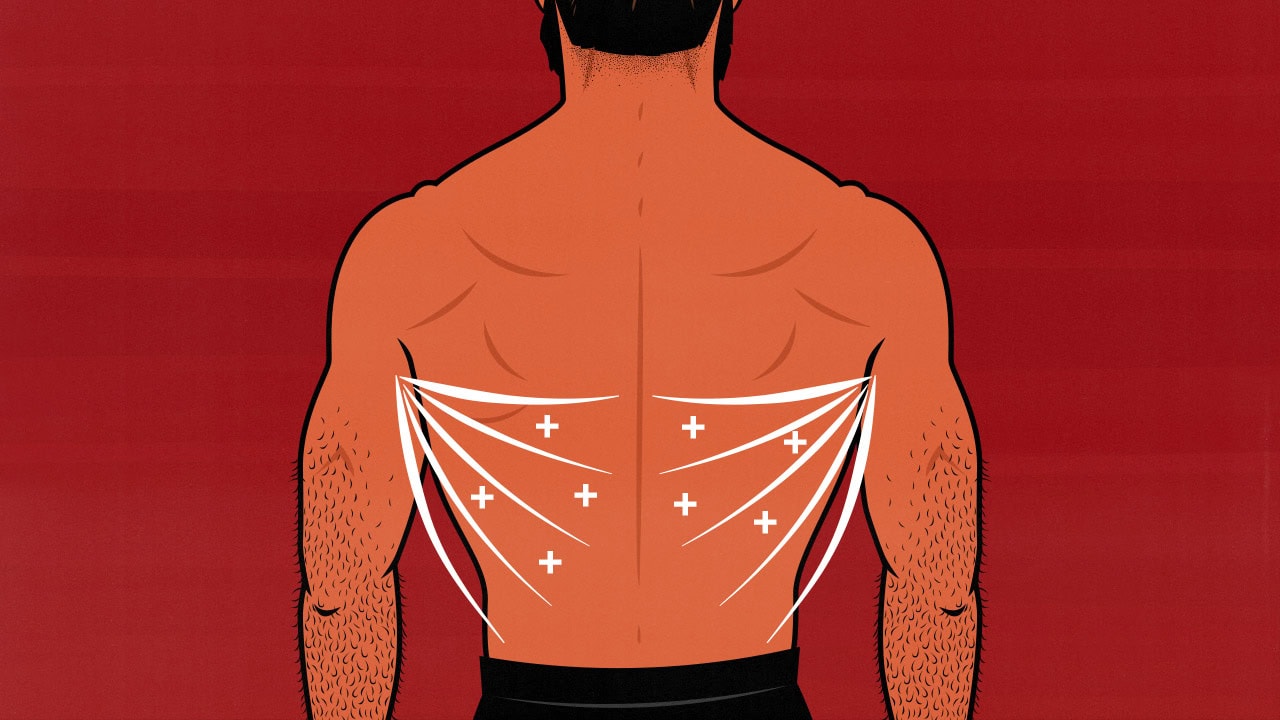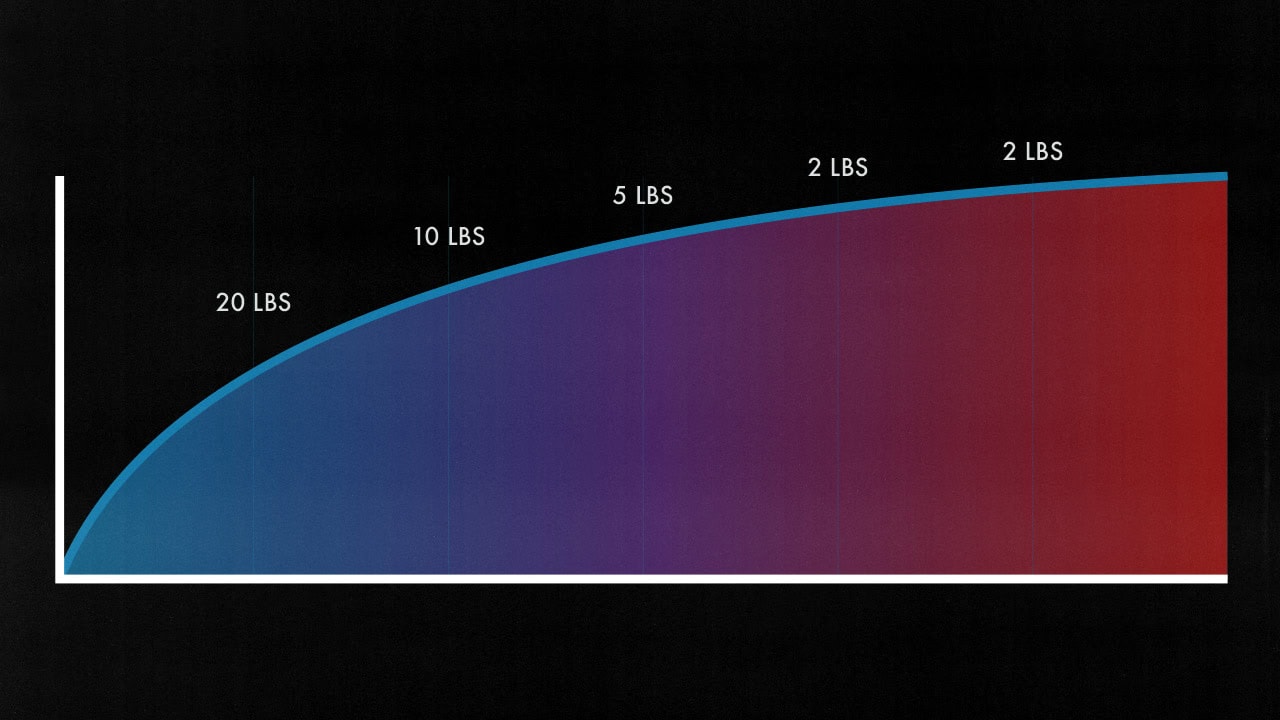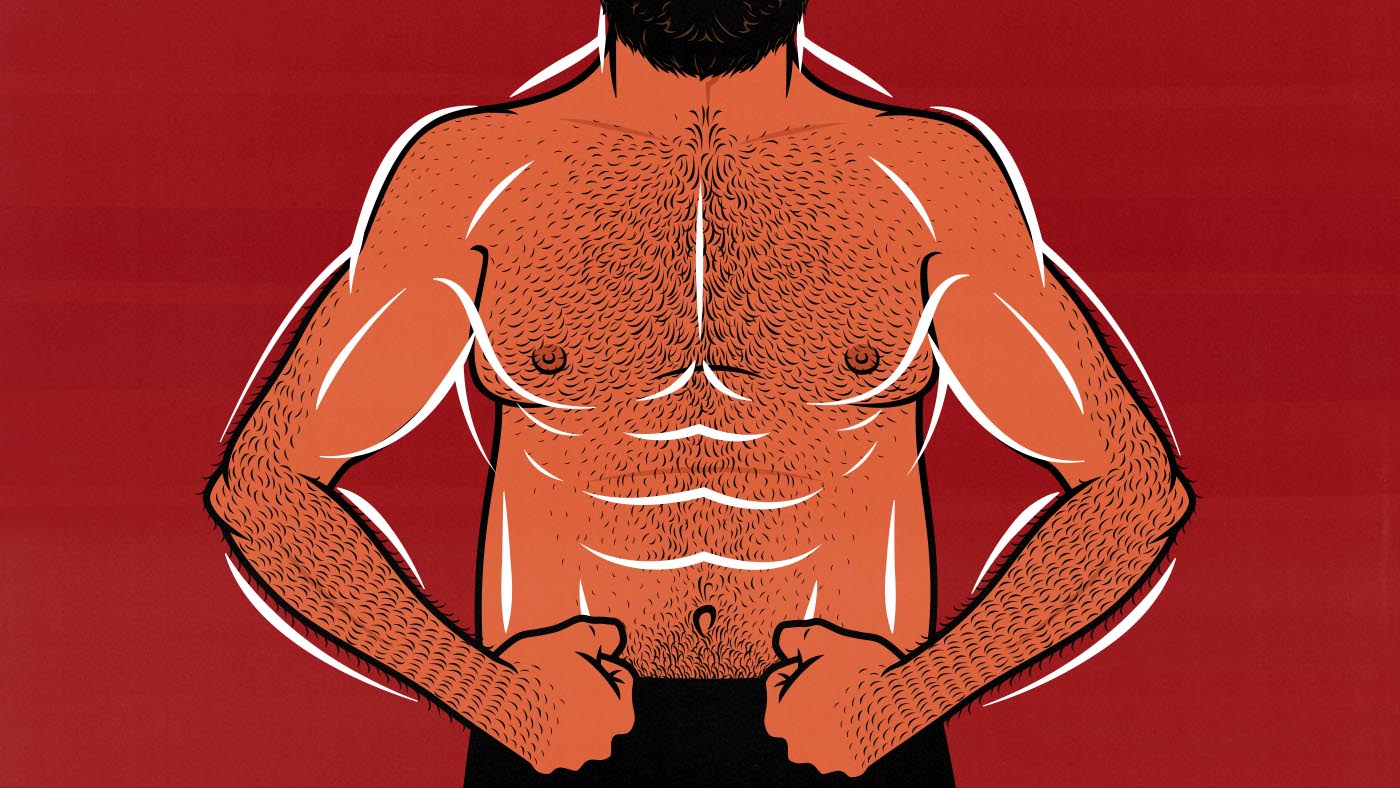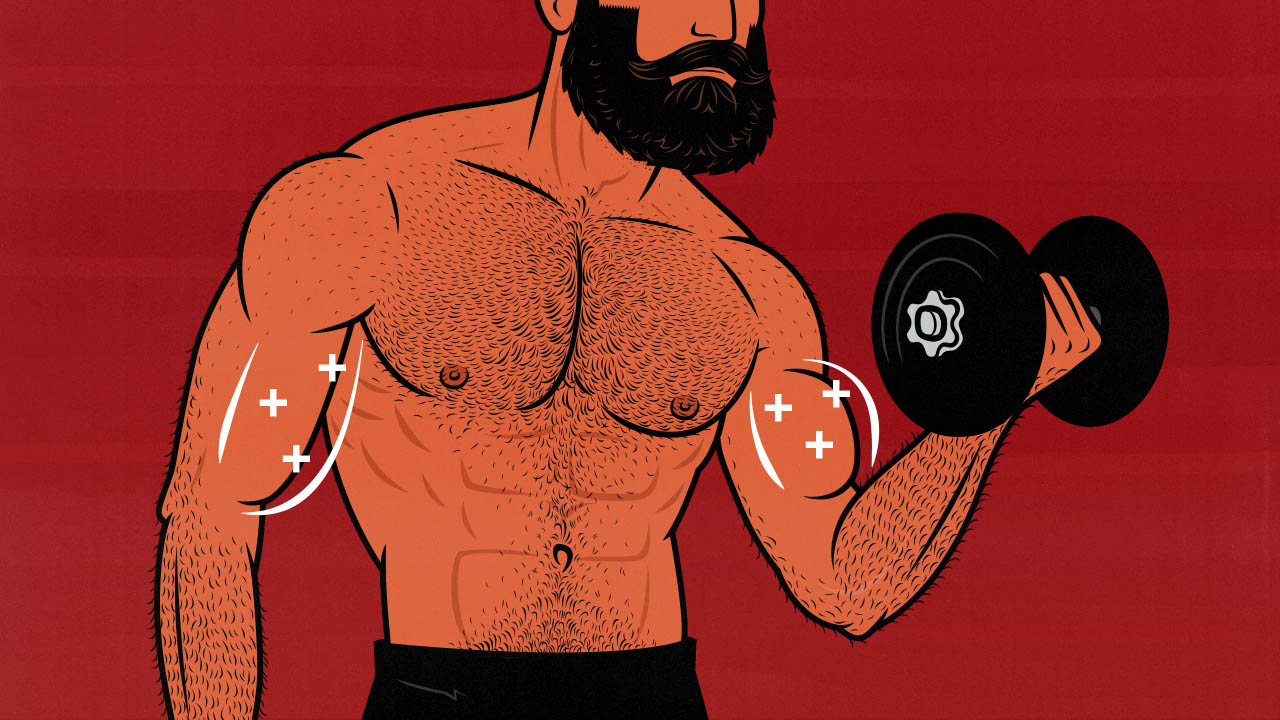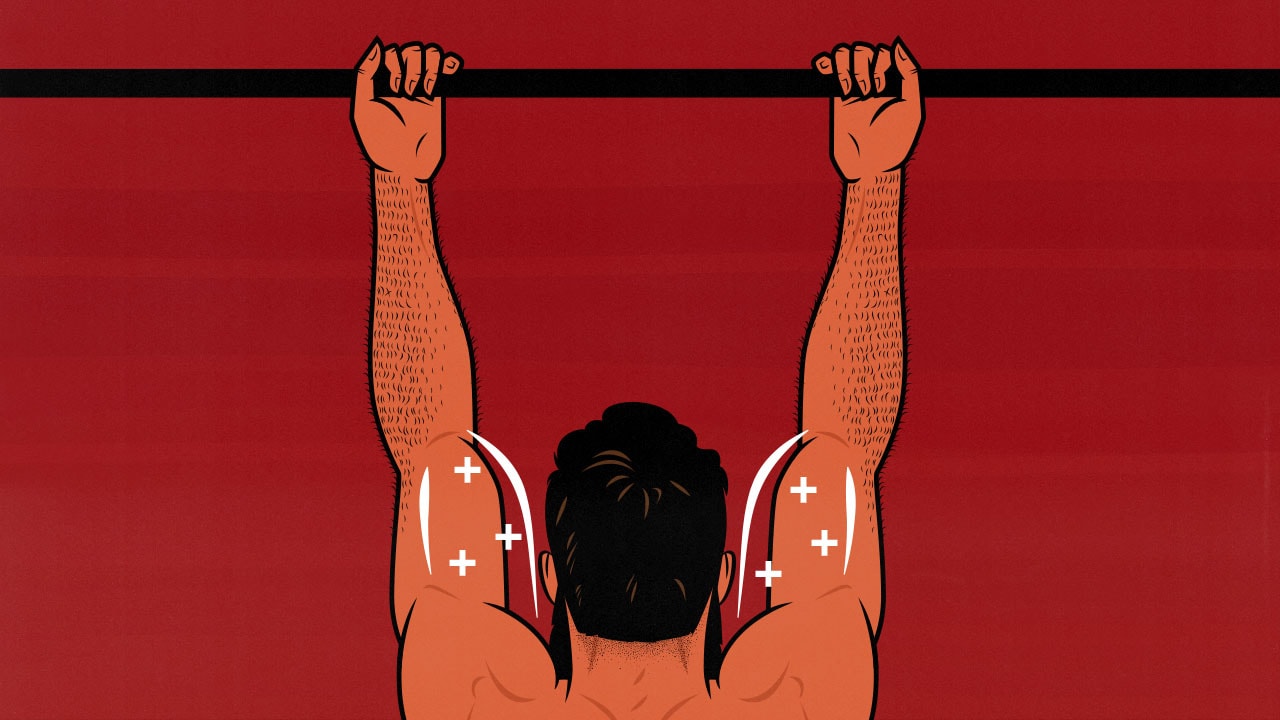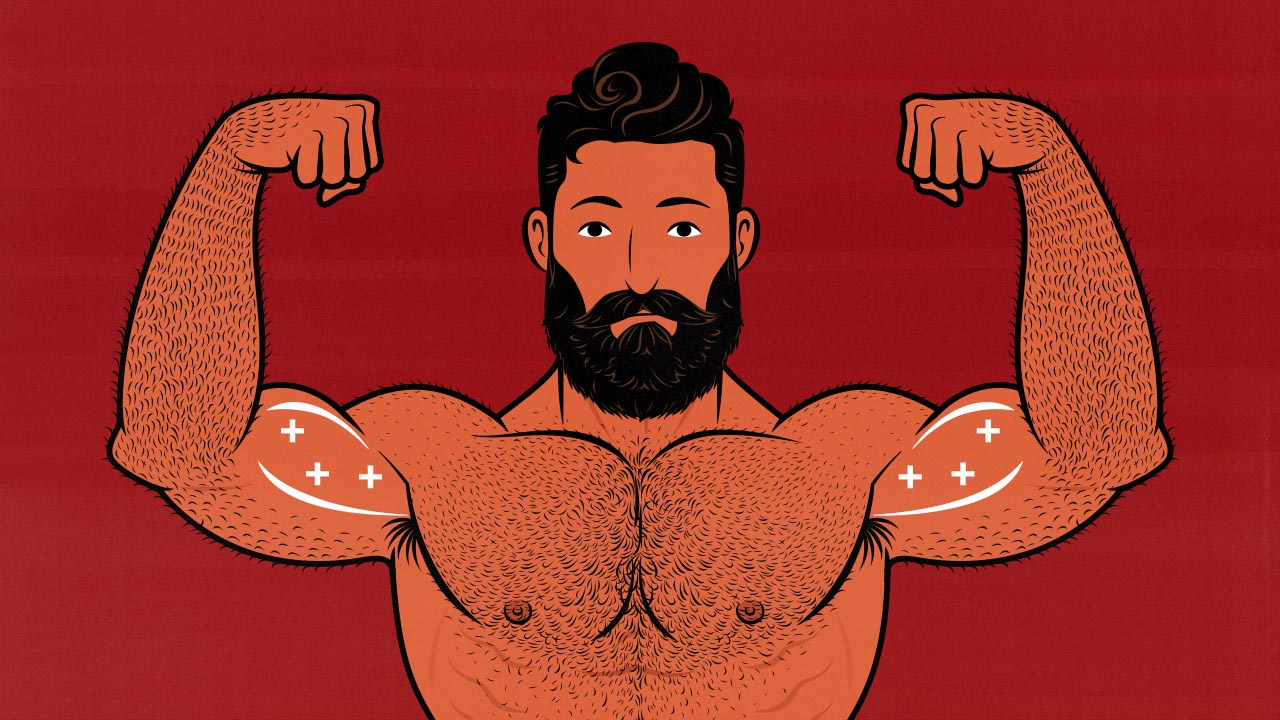Articles
The Best Leg Extension Alternatives
You can do leg extensions at home with just your body weight. It’s a variation called the reverse Nordics (pictured above). They’re hard, though, so I recommend getting good at squatting first. Squats will bulk up your quads just as effectively as leg extensions, and you’ll build the strength you need for reverse Nordics.
Delve into the detailsThe Best Leg Press Alternatives
The leg press is great for your quads and glutes, and it makes a good calf-raise machine. Some at-home alternatives are even better, especially if you have dumbbells or a barbell. If you don’t, we’ll give you some bodyweight exercises, too.
Delve into the detailsThe Best Deadlift Alternatives
Conventional barbell deadlifts are one of the best compound exercises for gaining muscle and strength, but you don’t need them in your workout routine. There are plenty of great deadlift alternatives that use barbells, dumbbells, exercise machines, or your own body weight. Some of them are easier, safer, or gentler on bad backs. We’ll cover all of them.
If you want to explain your situation and get a personal recommendation, we’ll answer all the comments. We’re both certified coaches, and we have over a decade of experience working with clients ranging from desk workers to college, professional, and Olympic athletes.
Delve into the detailsHow Long Does it Take to Build Muscle?
It takes most men about a year to gain their first 20 pounds of muscle. Those first 20 pounds are enough to add 1–2 inches to your arms and bump you up a clothing size. That’s when most guys start getting compliments.
If you succeed at gaining 20 pounds in your first year, then you can gain another 10 pounds in your second year, 5 more in your third, and smaller amounts afterward.
If you fall behind schedule, your muscles will still be ready to grow. You won’t “waste” your newbie gains. When you start building muscle again, you’ll be able to build it quickly.
Let’s go over some research, examples, and exceptions. We can also debunk some common claims.
Delve into the detailsThe Best Dumbbell Lat Exercises
Your lats pull your elbows in closer to your body, meaning that the best dumbbell lat exercises are some variation of dumbbell row. And dumbbell rows are fantastic. That’s all your lats need. Still, it’s better if you have at least a couple of exercises, especially if you can find exercises that challenge your lats at longer muscle lengths.
If you have a pull-up bar or some gymnastic rings, you can do chin-ups and pull-ups, working your lats just like a lat pulldown machine would. Otherwise, you can do dumbbell pullovers, sort of. They’re surprisingly controversial.
Delve into the detailsHow Much Muscle Can You Gain in a Year Naturally?
The common rule of thumb is that a natural male lifter can gain about 20 pounds of muscle in his first year, 10 pounds in his second, 5 in his third, and gradually less after that.
Women build muscle just as easily as men do. However, they’re usually smaller, so their average rate of muscle growth is proportionally slower. For example, if the average woman’s frame holds 2/3rds as much muscle as the average man’s, she might expect to gain 14 pounds of muscle in her first year, 7 in her second, and 3 in her third.
More controversially, you can expect to build muscle faster if you’re starting off skinny (full explanation). If you have an athletic background, you might start off more muscular, but future growth might be slower.
Perhaps most of all, your rate of muscle growth depends on how well you train and how much food you eat.
Delve into the detailsWhat is a Recomp? Body Recomposition Explained
Recomp is short for body recomposition, which is when you build muscle and lose fat at the same time. It’s the holy grail of the fitness industry. It’s actually pretty common, though, especially among people who are out of shape or new to lifting weights.
Let’s go over some examples and some research, and explain how to do it.
Delve into the detailsThe Best Biceps Workout (Dumbbell, Barbell, or Full Gym)
A good default is to train your biceps with 3–5 sets of vertical pulls (like chin-ups and lat pulldowns) followed by 2–5 sets of biceps curls (like preacher curls and lying biceps curls) every week. That gives you 5–10 sets of biceps work per workout, and it trains both the short and long head. I recommend doing that twice per week, bringing you up to 10–20 sets per week.
In the rest of the article, we’ll go into more depth, talk about the best biceps exercises, and give you examples of good biceps workouts you can do with dumbbells, barbells, cables, or at a full gym.
Delve into the detailsAre Chin-Ups/Pull-Ups Good for Your Biceps?
Chin-ups and pull-ups are heavy compound lifts, allowing you to heavily load your biceps while working them through a full range of motion. But they also train your back muscles, and some of those back muscles might fail before your biceps get worked hard enough. In that case, biceps curls might be the better biceps exercise.
Fortunately, a study comparing pull-downs with biceps curls found that they both stimulate about the same amount of biceps growth (study). Pull-downs work your biceps in the same way as chin-ups and pull-ups, so I suspect they’re similarly effective.
But there’s some nuance here. The short head of your biceps can work just fine during pulling exercises, but the long head can’t. The long head stabilizes the shoulder joint, so it can’t engage properly during pulling movements. It will grow faster if you do biceps curls.
Then, we need to consider that the distal portions of your biceps (closer to the elbow) grow faster when you challenge them at long muscle lengths (full explanation). Some types of biceps curls are better for that.
Delve into the detailsThe Best Short Head Biceps Exercises
The short head of your biceps is the simple head. Unlike the long head of your biceps, it doesn’t cross the shoulder joint. Well, it might, but it seems to be less significant than with the long head (study). Regardless, the short head is primarily responsible for flexing your arms, with a secondary function of supinating your hands. That means:
- You can train the short head perfectly well with regular biceps curls.
- You can also train it with pulling movements like chin-ups, pull-ups, and lat pulldowns. Rows won’t challenge your biceps very much, though.
- Exercises that are hard at the bottom are better for building muscle than exercises that are harder at the top (full explanation).
- You don’t need to worry about your shoulder position.
If you don’t have a preacher curl station, I’ll cover some alternatives that should be similarly effective.
Delve into the details
